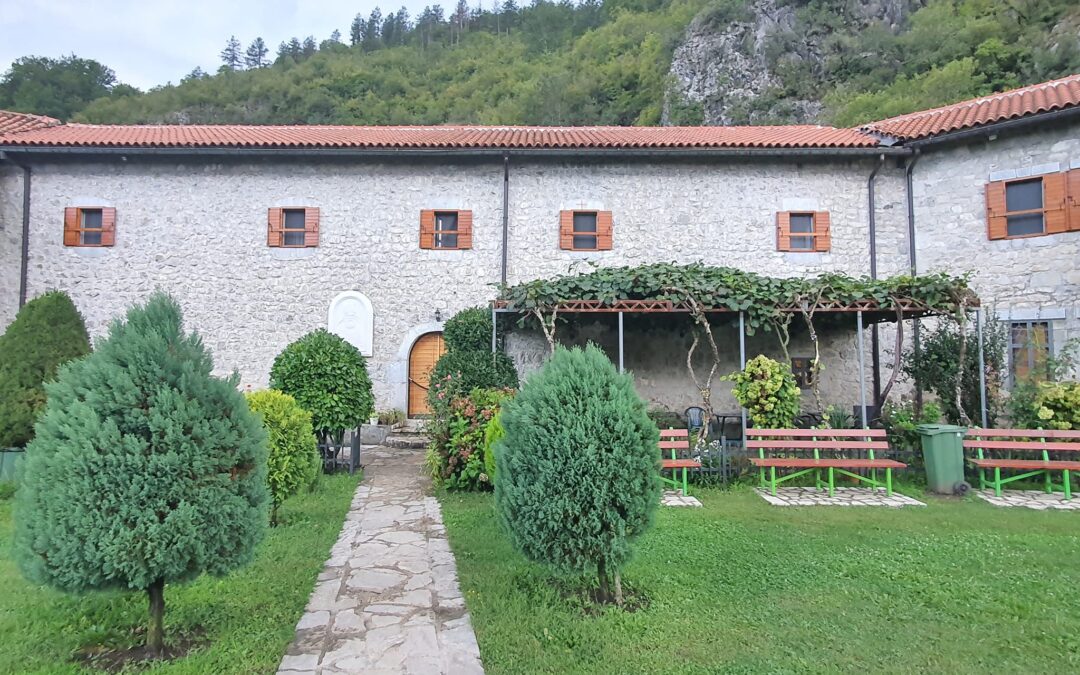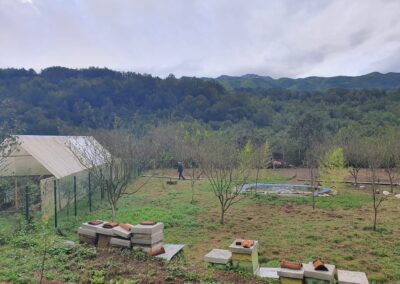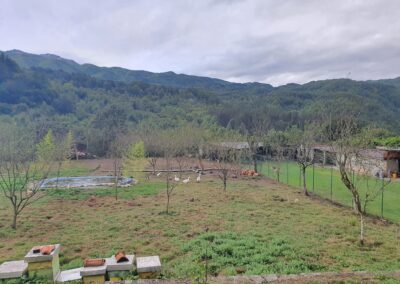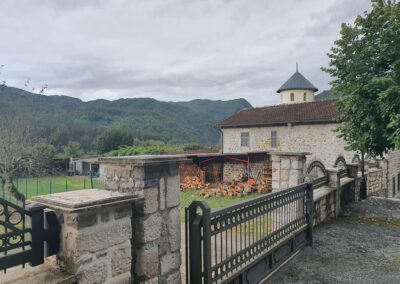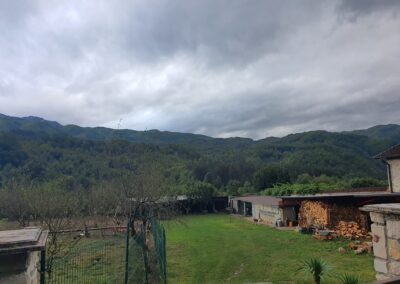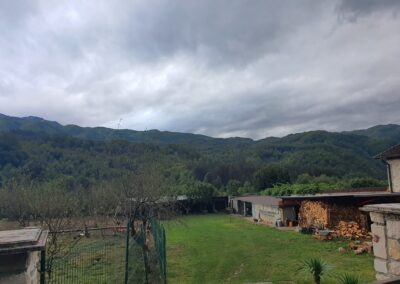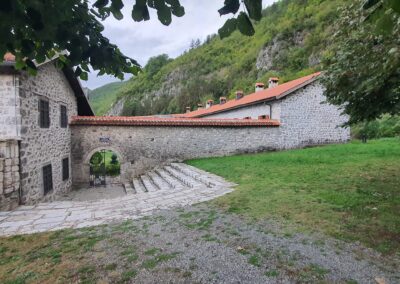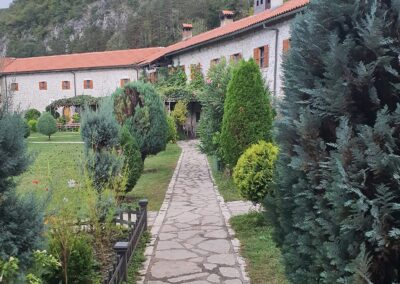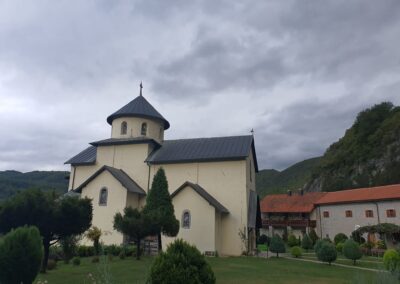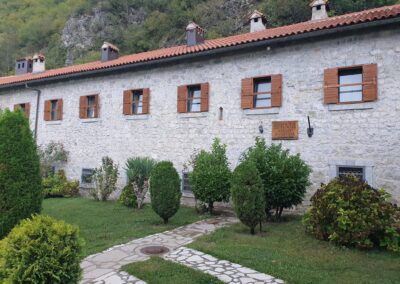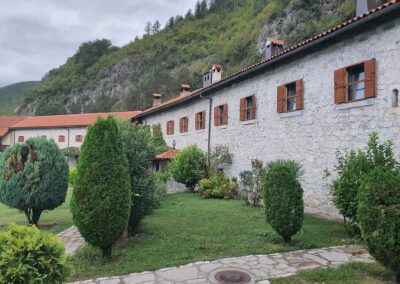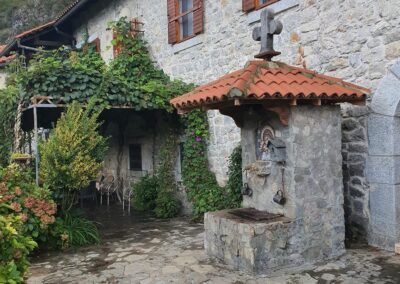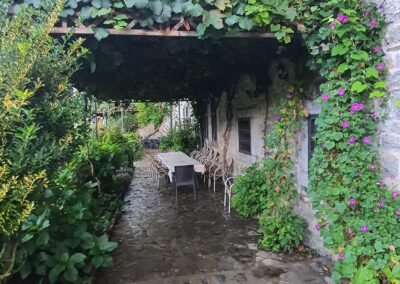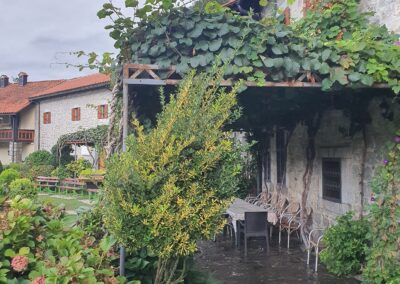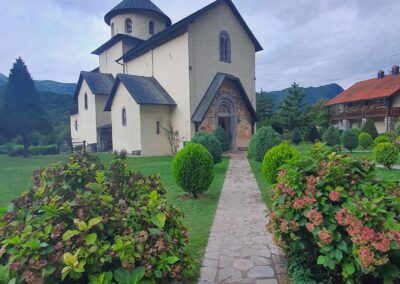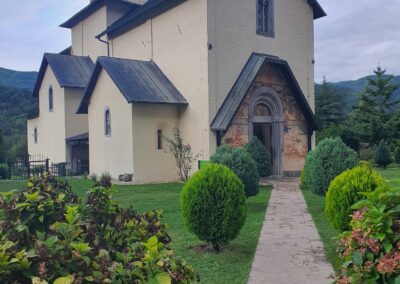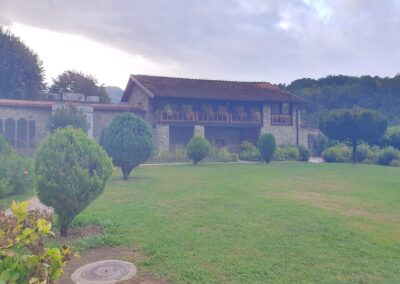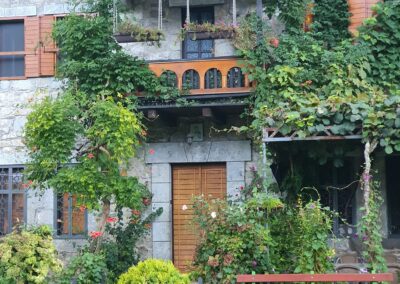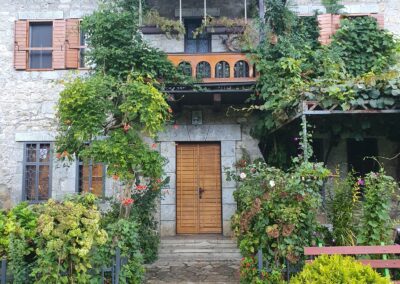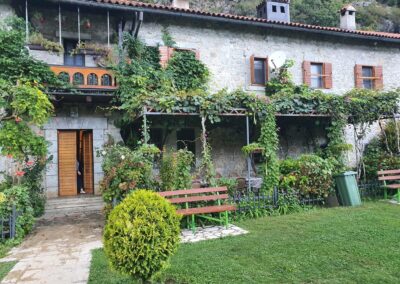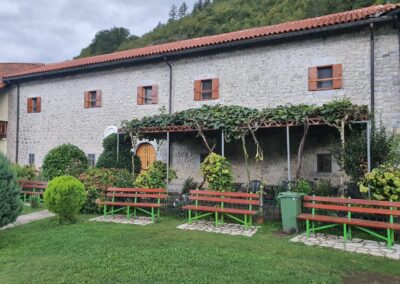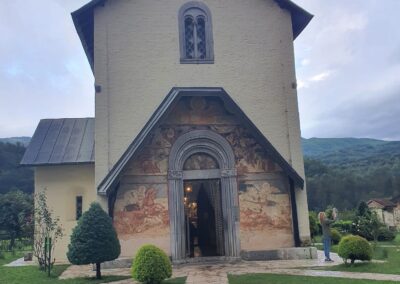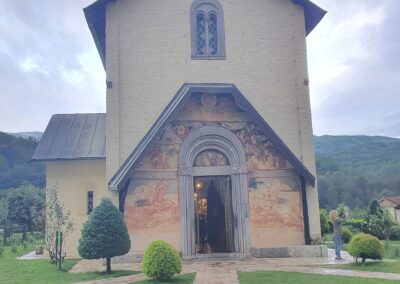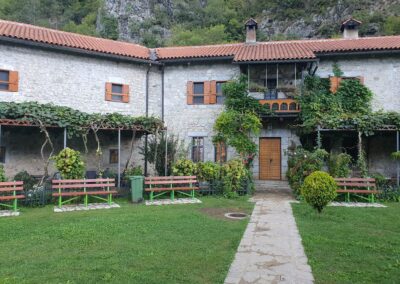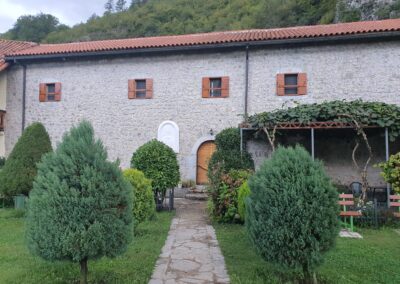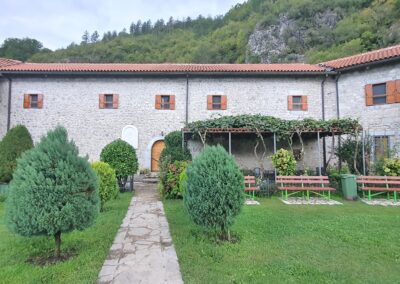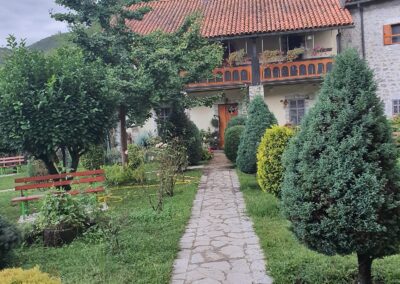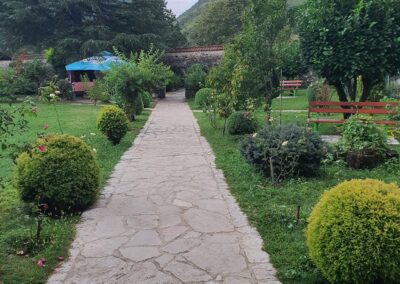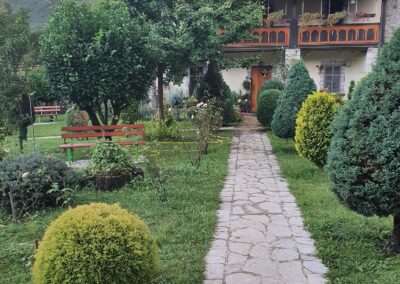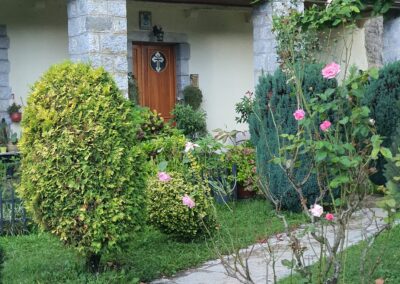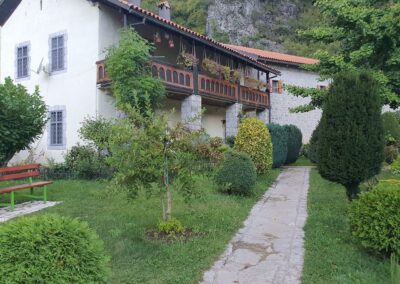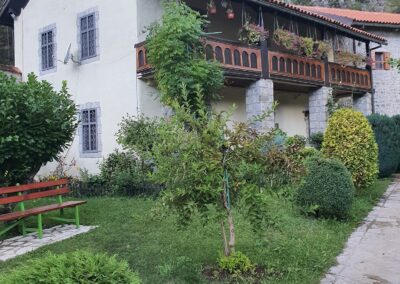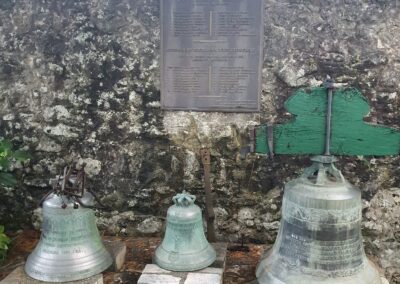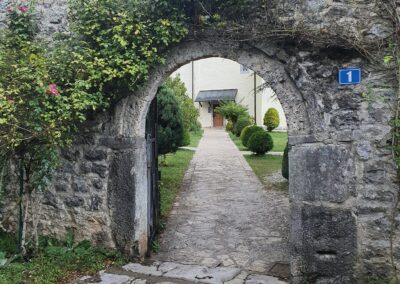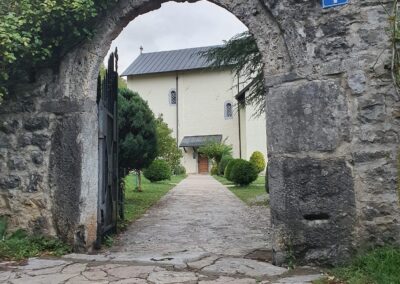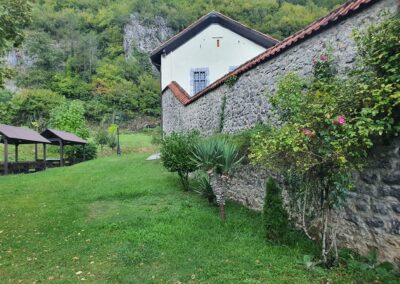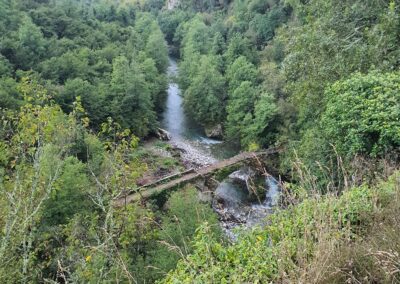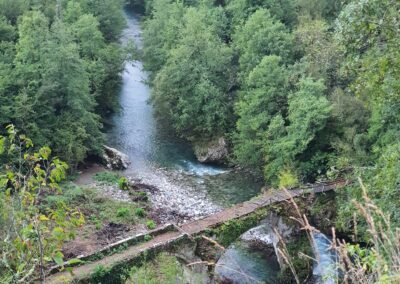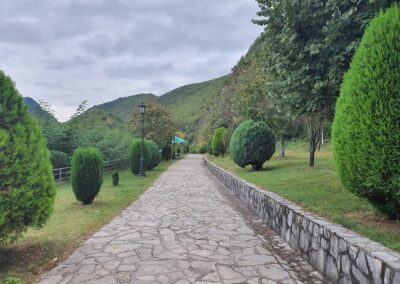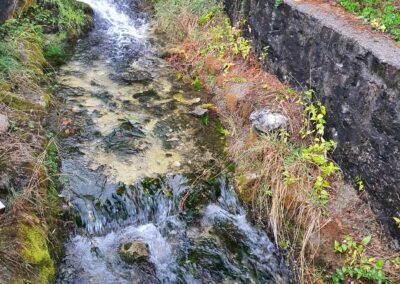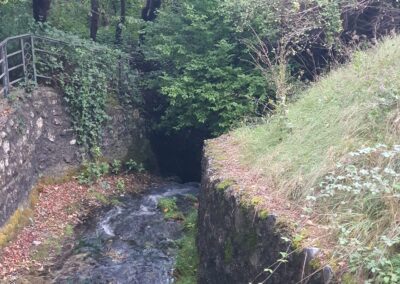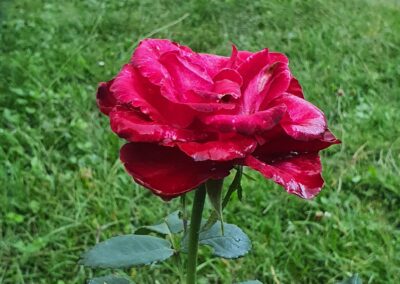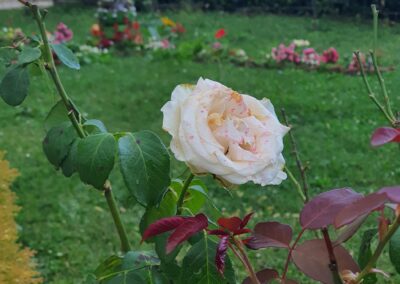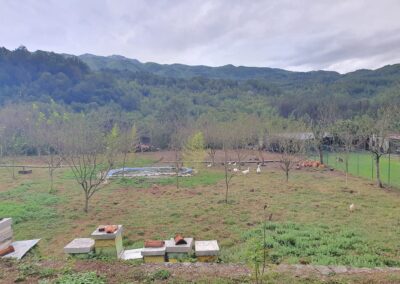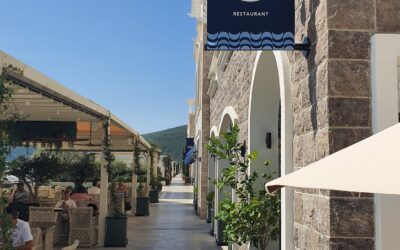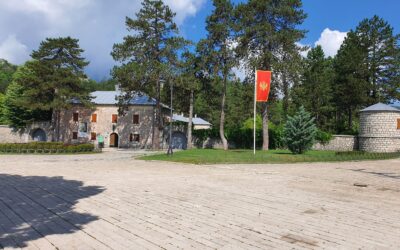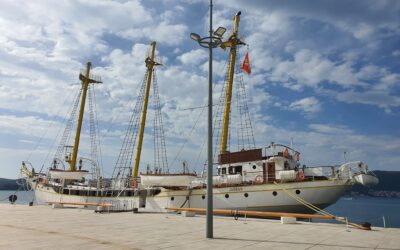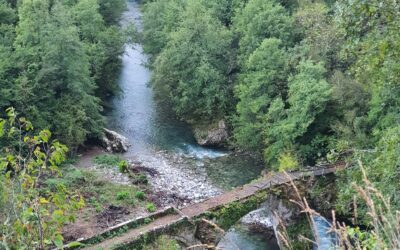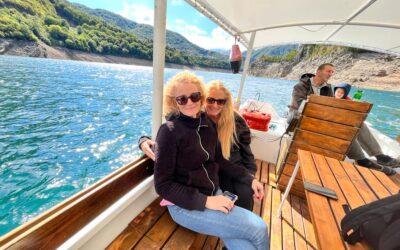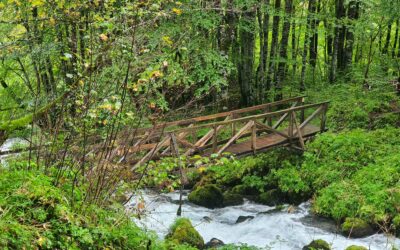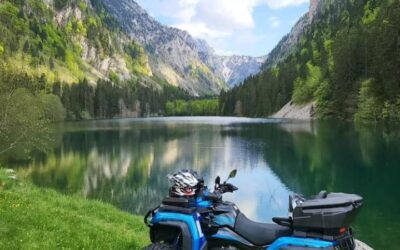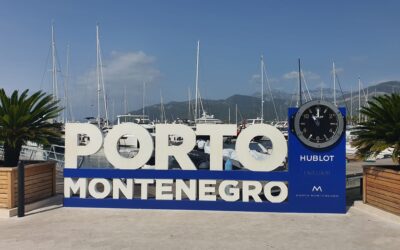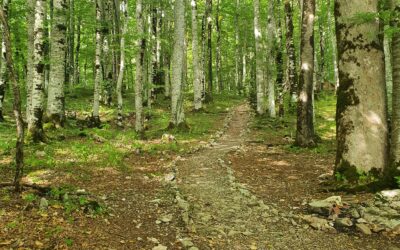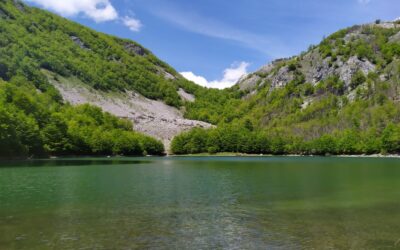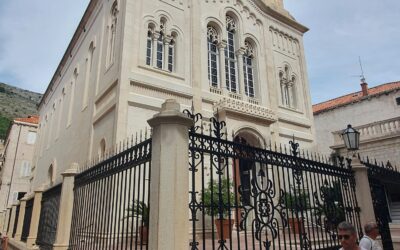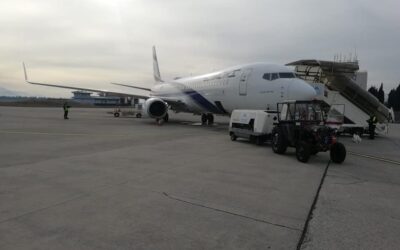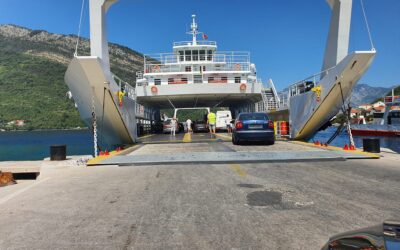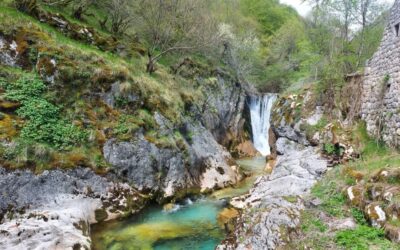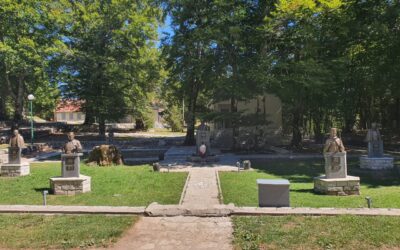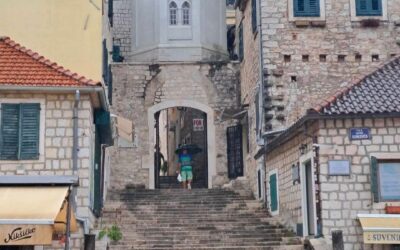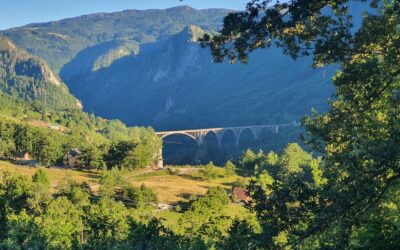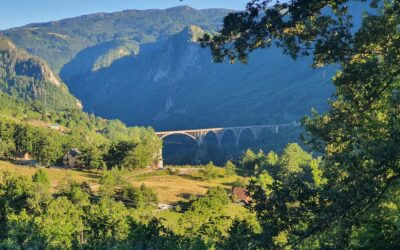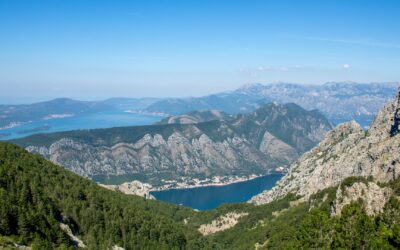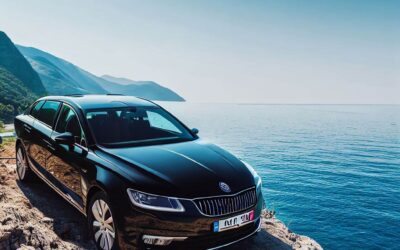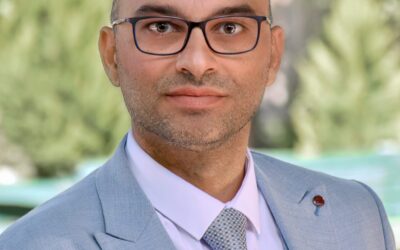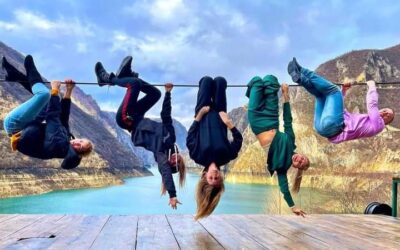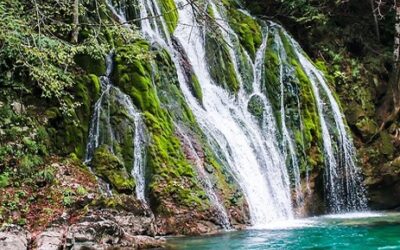Moraca Monastery is a beautiful Monastery from the 12th century in the Kolasin area.
Moraca Monastery is a beautiful Monastery from the 12th century in the Kolasin area.
Morača Monastery is a men’s monastery, one of the most important Serbian medieval monuments in the territory of Montenegro. It was built in 1252. The founder of the monastery was Prince Stefan Nemanjić, son of the titular king Vukan Nemanjić and grandson of the great prefect Stefan Nemanja. The monastery was created on the territory of the Zeta diocese of Svetosava, and today it belongs to the Metropolitanate of Montenegro and the Littoral, part of the Serbian Orthodox Church.
The monastery is located in the Municipality of Kolašin, on the right bank of the Morača River, in the extended part of the canyon, on a natural plain. Below the monastery is the Svetigora waterfall, whose waters flow into the Morača river.
The head of the monastery is Archimandrite Raphael (Kalik) with the brotherhood at the head since January 1, 1982.
The founding inscription on the lintel of the western portal testifies that the Morač temple was built in 1252 by Prince Stefan, who was the younger son of the titular king Vukan Nemanjić and grandson of the great prefect Stefan Nemanja.
At the time of its foundation, the monastery belonged to the Zeta Bishopric of Svetosava, which was founded in 1219 as part of the Žiča Archdiocese, and then in 1346, during the proclamation of the Patriarchate of Peć, it was elevated to the rank of honorary (title) metropolitanate. From the very foundation, the monastery was part of the Nemanjić state, i.e. the medieval Kingdom of Serbia and the later Serbian Empire, and at the same time it was an important stop on the trade route that led from Onogošte to Brskov.
After the creation of shared feudal areas, the monastery, together with the wider area around the upper course of the Morača River, found itself on the border between the states of Balšić, Branković, Lazarević and Kosač. The area fell under Turkish rule in the middle of the 15th century, so the Morača monastery never belonged to the Crnojevic state. During the period of Turkish rule, the monastery was part of the Herzegovinian sandjak together with Morač nahijas
According to recorded tradition, the monastery was burned down in 1505, and then remained deserted for a long time. Not long after the restoration of the Patriarchate of Peć (1557), the restoration of the Morača monastery began, which was completed around 1574, thanks to the abbot Toma and the people’s champion Vukić Vučetić, and on that occasion the death of the Serbian patriarch Makarij was recorded on the inscription about the restoration. The decoration of the monastery temple continued until the end of the 16th century and during the 17th century. At that time, the monastery had a significant role in preserving the Orthodox faith in the wider area of the hill tribes.
In the middle of the 17th century, some Roman Catholic missionaries tried to abuse the reputation of the Morača monastery by creating various falsified documents about alleged meetings in this monastery during 1648 and 1653. Although some older researchers gave credence to those disputed writings, later scientific analyzes showed that they are forgeries, which have nothing to do with the Morača monastery and historical reality.
During the 18th century, the monastery was one of the most important church seats in the wider area of Brda. After the creation of the joint Montenegrin-Mountain State (1796) and its gradual expansion towards the interior, the monastery freed itself from all Turkish rule around 1820, which was also confirmed by the subsequent demarcation between the Principality of Montenegro and the Ottoman Empire.
The last Turkish attack on the monastery took place on June 11, 1877, and at the head of the mountain battalion that defended the monastery was the then Morač abbot Mitrofan Ban, who later became the metropolitan of Cetinje (1885-1920). During his ten-year abbotship (1869-1879), the Morača monastery made significant progress in material and spiritual terms.
Beginning in 1878, the monastery was part of the newly created Eparchy of Zahum-Raška, to which it belonged until 1931, when this eparchy was abolished and attached to the Metropolitanate of Montenegro and the Littoral
The present appearance of the monastery dates back to 1935, when a substantial restoration was carried out, during the time of Metropolitan Dožić and Abbot Miron Medenica. The first car reached the monastery on September 2, 1936, when a merchant from Kolasin traveled 20 km of “roadless terrain” in two hours. At that time, the Ljubljana company “Tavčar” was building the road Kolašin – Manastir Morača – Rovci – Podgorica with great difficulties.
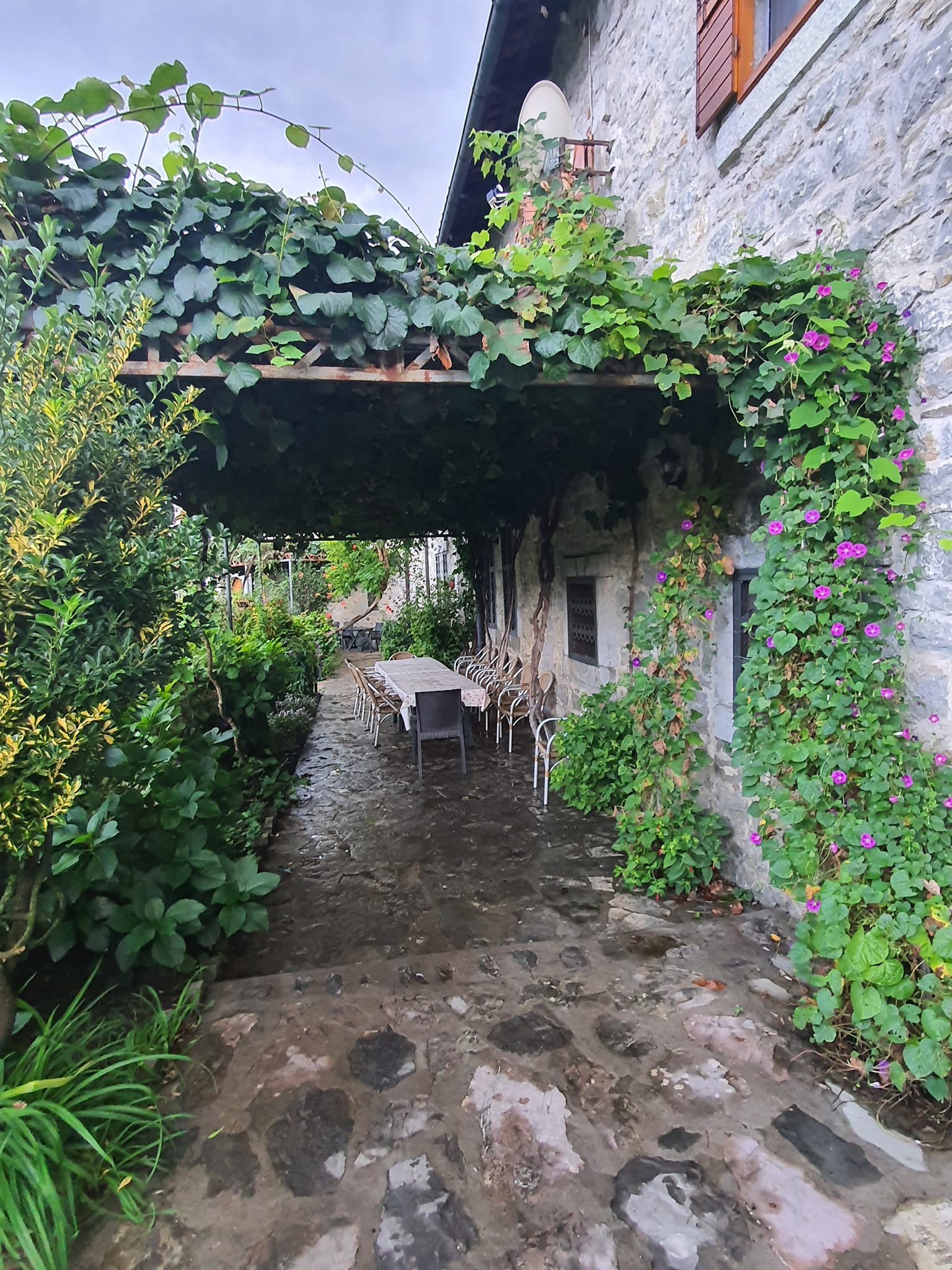
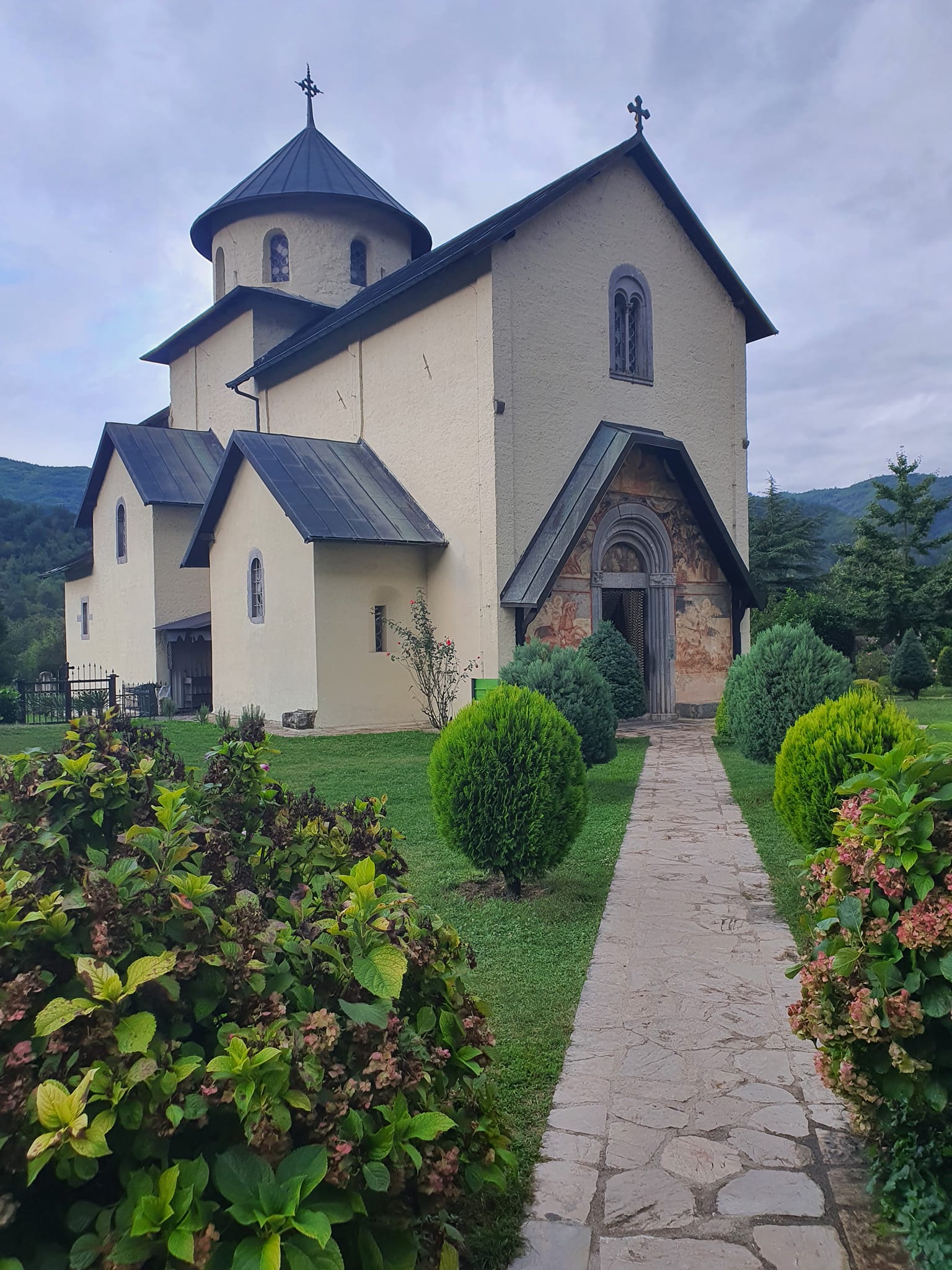
MEMORIES
Impression & Comments
Ilan Lazarovitz’s name came up accompanied by a recommendation and we concluded with him that he would be our chauffeur.
Already at the stage of the conversations / questions / before we arrived we knew we had won!!!
Ilan’s professionalism and humanity made our vacation nothing less than perfect!!
Highly recommend
Your private Driver to beauty of Montenegro
Last from Montenegro Blog
A calm and beautiful trip in the coastal area
A calm and beautiful trip in the coastal areaA calm and beautiful trip in the coastal area Arriving by car to a municipal parking lot next to Pine Tivat Promenade and the luxury resort of Porto Montenegrohttps://maps.app.goo.gl/g36QdfKNthVC51pn6TivatAfter you parked...
Cetinje Old Royal Capital City
Cetinje Old Royal Capital CityCetinje Old Royal Capital City of Kingdom of Montenegro. Cetinje Old Royal Capital City Kingdom of Montenegro is The city of Cetinje which was the capital city of the Kingdom of Montenegro until the Kingdom of Montenegro joined the Union...
Montenegro Tour day trip no3 sep
Montenegro tour with the clients day trip no 3Montenegro tour with the clients day trip no 3 From Budva via Tivat and Porto Montenegro , Ferry crossing , Hreceg Novi , Kotor , Budva. Trip around Montenegro Day number 3 After a night in Budva I picked up the clients...
Montenegro Tour day no 2
Montenegro tour with the clients day no 2Montenegro tour with the clients day no 2 From Zabljak via Tara Bridge , Tara river , one of water spring's of Tara River , Mojkovac , National Park Biogradska Gora , Kolasin , Manastir Moraca , Podgorica , Budva. Trip around...
Montenegro tour with the clients day no 1
Montenegro tour with the clients day no 1 From Podgorica airport to Zabljak via Danilovgrad , Niksic , Pluzine , Savnik .Montenegro tour with the clients day no 1 From Podgorica airport to Zabljak via Danilovgrad , Niksic , Pluzine , Savnik . Picking up customers from...
Tara River spring water Sep 2023 Day Trip
A perfect day trip to Tara river springs waterTara River Spring's A small introduction to how the story of this one-day trip begins. Our client only showed us a picture and told me they would like to see this.And so it happened. We came to our client with our lux...
Pluzine and National Park Piva ATV-s(quads) VIP tour
Pluzine and National Park Piva phenomenal ATV-s(quads) VIP tourDay Trip to Pluzine Our client was accommodated in a lux hotel in the capital city of Podgorica, we picked him up and his family with a lux vehicle and set off from the capital city of Podgorica to the...
Day Trip to divine Porto Montenegro Tivat
Private Day Trip to divine Porto Montenegro Tivat , your day trip with us is our commitment So our goal is that the client will have his day trip amazing and not forgetful , we come to pick up the client at his luxurious hotel and we drove the client in VIP lux car...
National Park Biogradska Gora
Day trip to National Park Biogradska Gora your amazing day trip is our commitment Biogradska Gora National Park was founded in 1952. Located in the north-eastern part of Montenegro, between the rivers Lim and Morača, in the central part of the Bjelasica mountain, it...
Ilans Blog
Featured categories Latest Posts About me IlanGet Social Vivamus magna justo, lacinia eget consectetur sed, convallis at tellus.
Amaizing Day Trip to Dubrovnik – Croatia
A private day trip tailored especially for clients to beautiful Dubrovnik - Croatia , it was just perfect day tripDubrovnik A private day trip started in Budva - Montenegro as I have pick up the clients from lux hotel in Budva riviera in VIP lux limo and special...
A brief explanation of Podgorica Airport
A brief explanation of Podgorica Airport the way from the plane to the exit of the terminal buildingA brief explanation of Podgorica Airport So Podgorica Airport is a very small airportBut this is a very big advantage because everything flows everything is very...
Explain what a ferry crossing looks like
Explain what a ferry crossing looks likeA ferry connects the two shores of the gulf on one side of the gulf called Lepetani (which is the side of Tivat) which connects to the other side which is Kamenari (which is the side of Herzeg Novi) that actually crossing by...
Hiking / Trek Tour in Pluzine and National Park Piva
Amazing Hiking / Trek Tour in Pluzine and National Park Piva's lakesIf you want to discover hidden places whose beauty deserves particular attention, visit Stabanska Lakes. They are located about 15 km from Plužine, in the territory of the village of Stabna, after...
Day Trip to Cetinje Lovcenj Muzolej Njegosi Kotor
Amazing day trip with satisfied customers to Royal Capital Cetinje National park Lovcenj Mausoleum of Petar II Petrovic Njegos than to ethno village Njegosi and from there to Old City of KotorThe route is from where you are For example (Kotor / Tivat / Budva /...
Day Trip with clients to Amazing Herceg Novi
Day Trip and Visit in City of Herceg NoviThe morning begins with a trip from an amazing hotel on the beach of Budva's Riviera. They collect the lessons in a luxurious and well-conditioned car, where in the car they are waiting for them with cold water and a very...
Day Trip to Pluzine and Zabljak
Pluzine - Zabljak whit Israeli FamilyOvde tekst o destinaciji, putu.. NPR. lNa najpopularniji rafting rijekom Tarom polazi se čamcima sa mjesta Splavište, slijedi Ljutica, most na Đurđevića Tari, Zeleni virovi i Žugića luka. Dužina spusta je 14 km. I u periodu...
Tara rafting
Tara raftingOvde tekst o destinaciji, putu.. NPR. lNa najpopularniji rafting rijekom Tarom polazi se čamcima sa mjesta Splavište, slijedi Ljutica, most na Đurđevića Tari, Zeleni virovi i Žugića luka. Dužina spusta je 14 km. I u periodu od 1.Juna do 1.Oktobra...
Pivsko jezero
Lake PivaOvde teksk bba;;allalala Piva NASNSKASAS NPR. lNa najpopularniji rafting rijekom Tarom polazi se čamcima sa mjesta Splavište, slijedi Ljutica, most na Đurđevića Tari, Zeleni virovi i Žugića luka. Dužina spusta je 14 km. I u periodu od 1.Juna do...
Sedlo one day tour
SedloBili smop na sedlucevorocla porodica ...Sedlo je na 1900 m nadmosrske visine unutar nacionalnog PARKA dURMITOR...\BALLAL;AL;A;A'A''A'AMEMORIESImpression & CommentsYour content goes here. Edit or remove this text inline or in the module Content settings. You...
Ilans Blog
NaslovOvde tekst o destinaciji, putu.. NPR. lNa najpopularniji rafting rijekom Tarom polazi se čamcima sa mjesta Splavište, slijedi Ljutica, most na Đurđevića Tari, Zeleni virovi i Žugića luka. Dužina spusta je 14 km. I u periodu od 1.Juna do 1.Oktobra...
Pluzine atraction
Discover beauty of Piva LakeCall For a Free Quote (382) 352-6258Or Send a Message AdrenalinTry zip line overe the lake. Longest zip line in Balkan, rafting, Cruise on the Lake to the border with Bosnia, with amazing view.Nature and taste of local foodRestoran with...
Recomended Providers
1 1 2 Family activity (Rafting 3h + Jeep tour 4h)3 Istražite mistiku Afrike4Doživite američki san5Toplina juga u ritmu sambe61 Private Boat Tour in Montenegro from Tivat. Taylor made daily cruises by captain Ilan2 Boat Tour on Skadar Lake National Park3 Speed Boat ...
Private driver
YOUR PRIVATE DRIVER IN MONTENEGROPrivate intercity transfers Book your private transfer from or to any point in Montenegro in one direction. From city to city, from door to door with a business-class sedan.Sigthseen tours Montenegro Visit the most beautiful places in...

